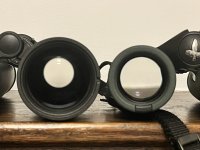And ..... as Scott98 has rightly said and using software as an example, it is very difficult to eliminate or remove defects after the product has been launched.
There is a good cost committed plot (somewhere) that shows the cost committed Vs the cost expended and timeline of the product lifecycle. This illustrates that the performance of the product is mostly determined at the design stage....when the tooling and production recurring costs have yet to be spent i.e. ~ 10% of the costs expended locks in the 90% of the ongoing lifecycle costs and performance.
A good analogy is the cost for safety critical software is much more than commercial consumer products.....the process employed is frighteningly different.
Scott98s using software as an example may not be so relevant. Coming from a manufacturer of both consumer durables and disposables, pre tech and post tech, it is not difficult to eliminate or remove defects after a product is launched. Its done all the time. These are called running changes and are integral to enabling product life cycles to last to the fullest. Its integral to a Total Quality Management system, (the bedrock of "Toyota"/"Just in time"), to continuously evaluate process and products and make changes to continuously improve. In that way the deepest market penetration, lowest cost and highest return, over the whole life cycle can be experienced.
As an example, many here recognize Swarovski's exemplary after sales service reputation. Some comment that's part of the highish prices Swarovski charges. I suggest not. Curiously the competing alpha brands charge about the same, but do not have quite the same after sales service reputation. Point? Liberal customer service operations are in fact part of that TQM system whereby companies fix things that fail or are reported to have failed in consumer's hands, in order to collect information as to what needs fixing within its system. First fix the complaint, then fix the source of the complaint. The source is corrected, the complaint goes away, ongoing costs are lowered, customer satisfaction and reputation grows, enhancing sales.
It would seem there's little doubt the design stage to include Marketing/Product Management, R&D, and Process Engineering provides the majority of momentum to future success. If the thing never got created, there would be no future... Ongoing costs are indeed greater than development costs, in products like these. Keeping things like binoculars going, with the attendant raw materials and parts costs as well as the entire manufacturing facilities/process to maximize the total return on a given product's life cycle requires participation of the whole business entity.
All of these lend credibility to Kimmik's proposition, that someone like Swarovski cant be ignoring the glare reported here among us on Birdforum. And maybe, just maybe its there for a reason. Thats an intriguing thought.
I wish two things:
1. Swarovski would come and tell us just what they were thinking. Why not?
2. I wish we had some way for all who come here read about this thing we call glare, flare, veiling glare, maybe haze, could come to know exactly what it is, what it looks like, under what conditions does it appear, how big a deal is it in reality?








